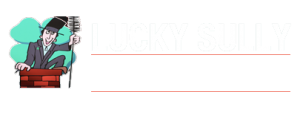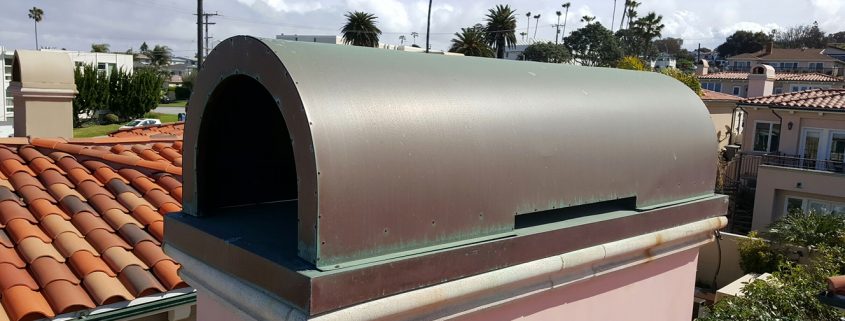From Cracks to Creosote: What Technicians Look for During a Comprehensive Inspection
A chimney does more than channel smoke from your home—it plays a pivotal role in your household’s safety and comfort. Over time, wear and tear, creosote buildup, and weather exposure can compromise its function, making regular inspections essential. From identifying cracks to clearing hazardous creosote, chimney inspections are a vital service to keep your home secure.
At Lucky Sully Chimney Sweep, our experienced team provides thorough inspections to identify and address potential risks. This guide explores what professionals examine during a chimney inspection and why these assessments are critical for your home.
Why Regular Chimney Inspections Are Crucial
A well-maintained chimney ensures proper ventilation, efficient heating, and safety for your household. Without inspections, hidden issues such as creosote buildup, cracked flue liners, or structural damage can lead to severe risks, including chimney fires or carbon monoxide poisoning.
Professional inspections identify these issues early, preventing costly repairs and protecting your family. According to the National Fire Protection Association (NFPA), chimneys should be inspected at least once a year, even if they’re not frequently used.
Lucky Sully Chimney Sweep offers expert Chimney Inspections to ensure your fireplace remains a safe and enjoyable feature of your home.
Types of Chimney Inspections
Level 1 Inspection: Routine Maintenance
This basic inspection is ideal for chimneys that haven’t undergone significant changes or issues. It includes a visual examination of accessible components like the flue and chimney exterior to identify obvious problems.
Level 2 Inspection: Comprehensive Review
A Level 2 inspection is more detailed, often involving video equipment to examine the internal structure. It’s recommended for new homeowners, after severe weather events, or before a major chimney cleaning.
Level 3 Inspection: In-Depth Analysis
Reserved for cases where severe damage or hazards are suspected, a Level 3 inspection may involve removing parts of the chimney or walls to access hidden areas.
For most homeowners, annual Level 1 or 2 inspections by professionals like Lucky Sully Chimney Sweep suffice to maintain safety and performance.
Key Issues Technicians Look for During Inspections
Creosote Buildup
Creosote is a highly flammable residue that forms when wood burns. A significant accumulation increases the risk of chimney fires, making its removal critical.
Technicians measure creosote levels and recommend cleaning if deposits exceed safe thresholds. Lucky Sully Chimney Sweep provides Chimney Cleaning services to eliminate creosote buildup effectively.
Cracks in the Flue Liner
The flue liner is a vital component that prevents heat, smoke, and toxic gases from entering your home. Over time, heat and moisture can cause cracks, jeopardizing your safety.
Inspectors use specialized cameras to detect these flaws and suggest relining options if necessary, ensuring your chimney operates efficiently.
Masonry and Structural Damage
Masonry issues, including loose bricks, deteriorating mortar, or cracks, can compromise your chimney’s stability. Over time, these problems worsen with exposure to weather and temperature changes.
Technicians identify damaged areas and recommend repairs to restore your chimney’s integrity. Learn more about maintaining chimney safety with Lucky Sully Chimney Sweep.
Obstructions and Blockages
Bird nests, fallen debris, or soot buildup can obstruct your chimney, affecting airflow and increasing the risk of carbon monoxide exposure. A thorough inspection clears these blockages, ensuring proper ventilation.
Signs of Moisture Damage
Water is a chimney’s worst enemy. Rusted components, weakened mortar, and mold growth are signs of moisture intrusion. Technicians check for these issues and recommend preventative measures, such as chimney caps or flashing repairs.
Seasonal Chimney Inspections: Preparing for Winter and Summer
Orange County’s climate brings unique challenges to chimney maintenance.
- Winter Preparation: Increased fireplace usage requires a clean, functional chimney to prevent creosote fires.
- Summer Preparation: Rain and humidity can cause water damage, requiring protective measures to keep your chimney in top shape.
Scheduling seasonal chimney inspections with Lucky Sully Chimney Sweep ensures your fireplace remains safe and efficient year-round.
Why Choose Professional Inspections Over DIY?
While DIY chimney checks might seem cost-effective, they lack the expertise and tools professionals bring to the table. DIY inspections often miss hidden issues like internal cracks or creosote buildup, leaving your home vulnerable.
Lucky Sully Chimney Sweep uses advanced equipment and trained technicians to provide reliable and thorough assessments, offering peace of mind for homeowners.
The Role of Modern Technology in Chimney Inspections
Innovative tools, such as video cameras and thermal imaging, allow technicians to detect issues hidden within your chimney’s structure. These technologies ensure no problem goes unnoticed, providing accurate diagnoses and effective solutions.
How to Prepare for Your Chimney Inspection
- Clear the Fireplace Area: Remove furniture or decor around the hearth to give technicians easy access.
- Stop Using the Fireplace: Ensure your chimney is cool and hasn’t been used in the past 24 hours.
- Ask Questions: Don’t hesitate to ask your technician about their process or findings during the inspection.
Conclusion: Protect Your Home with Regular Chimney Inspections
Your chimney is more than a decorative feature—it’s a critical part of your home’s safety system. Regular inspections not only extend its lifespan but also protect your family from potential hazards.
Trust Lucky Sully Chimney Sweep for expert Chimney Inspections services. Our team ensures your chimney is safe, efficient, and ready for every season.
FAQs
How often should I schedule a chimney inspection?
The NFPA recommends annual inspections, even for chimneys used infrequently.
What’s the difference between Level 1 and Level 2 inspections?
Level 1 focuses on visible areas, while Level 2 involves internal checks using video equipment.
Can I clean my chimney without an inspection?
Cleaning without inspection may overlook structural issues or creosote buildup, compromising safety.
What are the dangers of ignoring chimney inspections?
Skipping inspections increases risks like chimney fires, carbon monoxide leaks, and costly repairs.
What should I do if my chimney has cracks or creosote buildup?
Contact professionals like Lucky Sully Chimney Sweep to assess and address the issues promptly.









